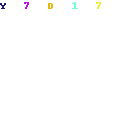Introduction
The Japanese language is spoken by the approximately 120 million inhabitants of Japan, and by the Japanese living in Hawaii and on the North and South American mainlands. It is also spoken as a second language by the Chinese and the Korean people who lived under Japanese occupation earlier this century.
Characteristics of Japanese
Vocabulary
Three categories of words exist in Japanese. The native Japanese words constitute the largest category, followed by words originally borrowed from China in earlier history, and the smallest but a rapidly growing category of words borrowed in modern times from Western languages such as English. This third category also contains a small number of words that have come from other Asian languages. Studies by the National Language Institute show that the frequency of these three types of words varies according to the kinds of written material examined. In magazines, native Japanese words constitute more than half of the total words, while the Chinese borrowed words average about 40%, and the rest drawn from the recently borrowed words from Western languages. In newspapers, the words of Chinese origin number greater than the Japanese native words.
Sounds of the Language
Japanese has an open-syllable sound pattern, so that most syllables end in a vowel -- the syllable may be composed solely of the vowel.
There are five vowels, /a/, /i/, /u/, /e/, and /o/. Vowel length often distinguishes words, as in to for "door" and too for "ten." The basic consonants are: /k/, /s/, /t/, /n/, /h/, /m/, /y/, /r/, /w/, and the syllabic nasal /N/. Many of these consonants can be palatalized in front of the vowels /a/, /u/, and /o/, for example, /kya/, /kyu/, /kyo/. When the two consonants, /s/ and /t/, occur with the vowel /i/, these consonants are automatically palatalized as /shi/ and /chi/. The consonant /t/ is pronounced as /ts/ in front of the vowel /u/.
Unlike English, which has stress accent, Japanese has pitch accent, which means that after an accented syllable, the pitch falls. The word for "chopsticks," hashi, has the accent on the first syllable, so its pitch contour is ha shi. Without the accent on the first syllable, hashi may mean "bridge" or "edge." "Bridge" has accent on the second syllable, which can be seen if a grammatical particle such as the subject marker ga is attached to the word: hashi ga. "Edge" has no accent, so it would be pronounced without any fall in the pitch even with a grammatical marker such as ga.


